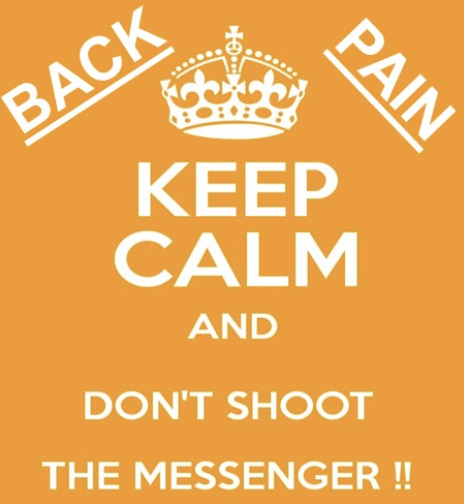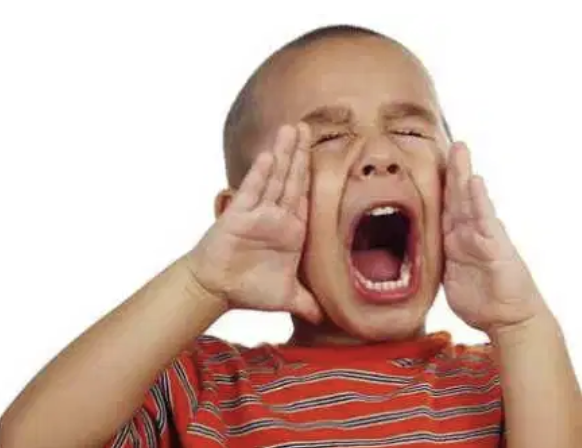“Don’t shoot the messenger, maybe it’s time to listen instead.”

The next time you suffer low back pain, rather than automatically grabbing your pain killer of choice, try taking a moment to truly listen to what your body is telling you. Is it telling you that you have been sitting (in front of the computer) for way too long and it’s time to move? One of the easiest things to do is to simply stand up and reverse the curve of your spine. It’s as simple as this….
Pain is a very normal and essential human response. It is designed to keep us safe. More often than not, pain is a protective, early warning system. What happens when you accidently put your hand on a hot saucepan? Imagine the damage if you didn’t have this protective mechanism? Thus, pain is your friend, not your foe.
“Pain is a protective, early warning system”
Unfortunately, if we don’t pay attention to our pain response and act accordingly, the pain pathways can become enhanced, triggered more easily and more intensely. The longer pain goes on, the more the body gets into the habit of holding on to it. So unfortunately, this system that serves to protect us, can at times become over sensitive. The pain is no longer a dull ache, it’s more severe and it kicks in before you’ve even had time to turn your computer on. Your body is now SHOUTING at you, because you haven’t been listening.

We have all heard the catch cry ‘sitting is the new smoking’ so taking ‘pause breaks’ from sitting not only helps to keep the lower back quiet, but can assist productivity1, as well as provide other health benefits2. Both Work Safe3 and The Heart Foundation2 advocate standing and taking a break from your computer every 20-30mins. Here is a link for more information as well as some ideas to reduce sitting time. Now before you run off to buy yourself a standing desk, current research indicates long term standing can also increase the risk of lower back pain4. The key is to make sure your body receives enough movement.
“Motion is the lotion all our joint and muscles crave”
Motion is the lotion that all out joints and muscles crave, but for many back-pain sufferers, it can be tricky getting back into physical activity. In the next newsletter we will explore the ‘Goldilocks Principle’ as well as other tools and guidelines, to get you back moving for your life and beyond.

“70-90% of us will experience lower back pain at some point in our lives”
It is estimated that 70-90% of us will experience lower back pain at some point in our lives5 and the more we understand pain, the less it hurts. If you would like to know more about pain science and understanding pain, I highly recommend this book – Explain Pain, which is written especially for the sufferer. You can also use this simple Australian Government, Symptom Checker, to provide advice on whether you should seek medical treatment for your back pain.
-
Waongenngarm, P., Areerak, K., & Janwantanakul P (2018) The effects of work breaks on low back pain, discomfort and work productivity in office workers: A systematic review of randomised and non-randomised controlled trials. Applied Ergonomics Apr, 68:230-239.
-
Heart Foundation, Sitting less for Adults retrieved from https://www.heartfoundation.org.au/images/uploads/publications/PA-Sitting-Less-Adults.pdf
-
Worksafe (2011) Officewise – A guide to Health and safety in the office. Retrieved from www.worksafe.vic.gov.au
-
Viggiani, D. & Callaghan J. (2017) Hip abductor fatigability and recovery are related to the development of low back pain during prolonged standing. Journal of Applied Biomechanics. 34(1):39-46
-
Australian Institute of Health & Welfare (2019) Retrieved from https://www.aihw.gov.au/reports/chronic-musculoskeletal-conditions/back-problems/contents/risk-factors-associated-with-back-problems
